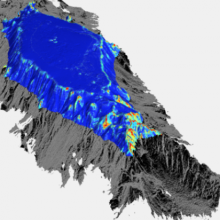Source: Marine Conservation Institute
Author: Sam Georgian
Seamounts are underwater mountains rising thousands of feet from the bottom of the ocean. Due to their size and shape, seamounts exert a strong influence on local currents that results in nutrient enrichment and increased food supply. As a result, these massive features are often highly productive ‘oases’ in the deep sea, supporting a large diversity of species including functionally important deep-sea corals (Stocks and Hart 2007). Deep-sea corals provide essential habitat structures for a large number of associated organisms, including many commercially important fish. These communities are currently at risk from a number of threats including climate change, oil and gas extraction, and benthic fisheries.
Countries around the world have agreed to protect and conserve fragile, deep-sea coral habitats by identifying them as vulnerable marine ecosystems (VMEs). A major obstacle to identifying VMEs is the vast amount of seafloor that remains unexplored due to the prohibitive time and expense of surveying the deep sea. Coupled with the relative rarity and patchiness of many corals and other deep-sea organisms, locating and protecting these communities can be like finding the proverbial needle in a haystack.
Continue reading here.

